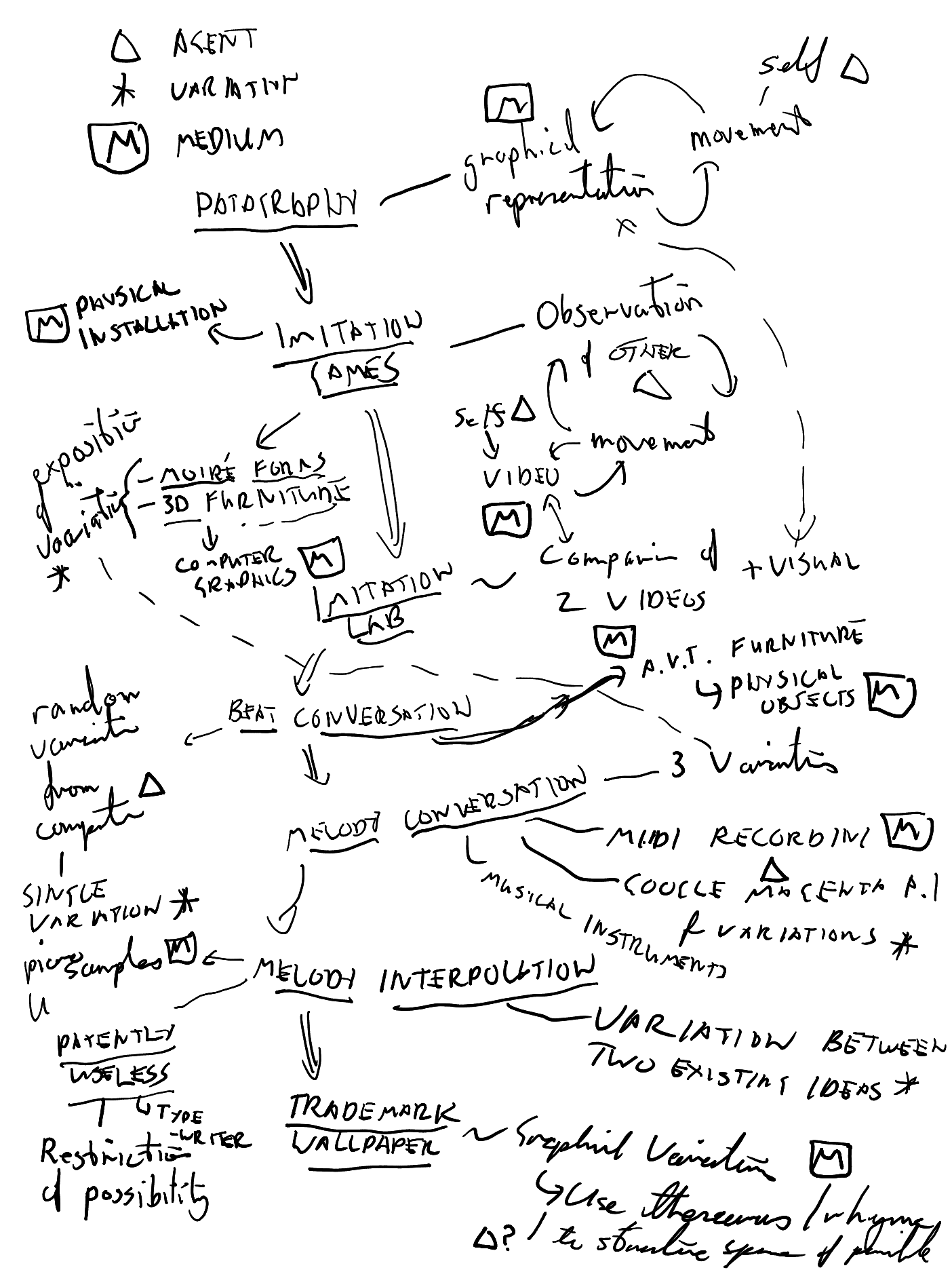Some of my previous work for this course, and before, has concerned imitative processes:
GSA MDes
Creative Coding
- Open Processing profile
- Three interesting sketches: Moire Forms | 3D Furniture Explorer | Wandering Characters
- Final Project: Imitation Lab (PDF)
Media Theory
- Beat Conversation - (Cur | Res | Syn | Creation | Src)
- Actor Network / Street Furniture - (Curation | Research | Synthesis | Creation)
- Melody Conversation - (Curation | Research | Synthesis | Creation | Source)
- Reflection
Media Law
- Melody Interpolation (PDF | Source)
- Patently Useless (PDF | Source)
- Trademark Wallpaper (PDF | Source)
Project mind map
I tried mapping some connections between the previous projects:

From this, there are some recurring themes:
- Variation in Agent (self, other people, randomness, AI (Google Magenta)
- Variation in Medium (Video, rhythm, melody, human body, furniture ,musical instruments (piano))
- Methods of variation, exposition and generation
- Variations in representation (graphical, in imagination / mind, audio / video recording)
Commentary
Patagraphy is an exploration of graphical forms as representative of movement. This creates a relation between the ephemeral and the permanent; between interpretation and denotation; between the body and abstraction.
Imitation Games creates an environment which focuses the attention on the other, inviting absorption and transmission of movement ideas.
Moire Forms and 3D Furniture Explorer present multiple variations of a form, side by side, like a means of sifting for possibilities. Wandering Characters invites an entanglement of paths, and offers a parallel between words and steps.
Imitation Lab puts two video sources together, offering an immediate comparison of two forms. I haven’t tested it extensively yet… Maybe I need to do some user testing!
Beat and Melody conversation projects develop the idea of variation in musical forms as imitative processes.
The Media Theory reflection concludes that CONVERSATION THEORY is a useful theory to develop ideas using. We could frame the question here as HOW CAN CONVERSATION THEORY BE USED TO IMPROVE AESTHETIC SENSIBILITY AND EXPRESSION?
The various media law projects offer an obvious legal angle: notions of discrete agency and ownership are hard to enforce in a world of iterative and imitative development of ideas. (Is music something that happens between people or inside of people?)